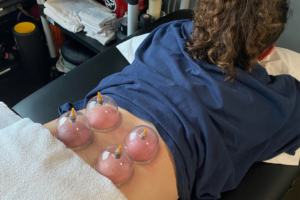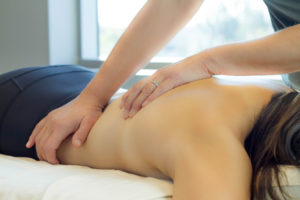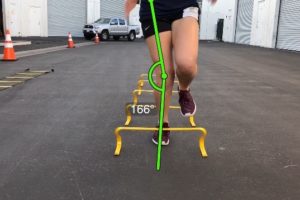Low back pain is one of the most annoying and persistent conditions that most of us will have to deal with in our lives. In fact, 70 to 90% of people will experience an episode of low back pain. While most cases of new low back pain resolve within 4-6 weeks, those 4-6 weeks can seem like a long time, especially if you’re used to being in the gym.
70 to 90% of people will experience an episode of low back pain.
Perhaps not surprisingly, many people have acquired or exacerbated their low back pain with deadlifting. However, the deadlift can be used not only to rehab low back pain, but also to improve lifting capacity so that the back is more resilient and protected against future injury.
Most importantly, every day during life, you have to lift things from the ground, so you might as well get better at it.
Below are THREE reasons why deadlifts are good for low back pain!
1. Deadlifts strengthen your spinal bones, muscles, and tendons!
Our bodies are composed of impressively strong and resilient tissues that can withstand immense forces (hundreds of pounds of compressive forces!). The only way to top that design would be to make the body adaptable…..and, it is HIGHLY adaptable. Deadlifts, or any other external loads, create a stress upon the vertebrae, back muscles, and back tendons that results in tissue changes to make each of these structures stronger.
A stronger back is more often than not a less painful back because it is not as easily tweaked by everyday movements or irritated by compressive forces (such as carrying furniture, or flexion).
2. Proper deadlifts develop your hip and glute musculature!
Many of our clients have come in with low back pain after deadlifts, but minimal glute or hamstring soreness after deadlifts….is this a coincidence? Unfortunately not. While nearly everybody understands the concept of “lift with your legs, not your back,” in practice, even good looking deadlifts can be more “spine dominant” than “leg dominant”, and result in large forces through the back that can irritate the musculature, especially if it is already sensitive. A properly executed workout with deadlifts should result in moderate leg soreness and minimal low back soreness.
Stronger hip and glute musculature will increase your ability to tolerate heavier loads, even if your back musculature is lagging behind in strength. The more load that you bear through your hips, the less load your back muscles have to deal with.
Stronger hip and glute musculature will increase your ability to tolerate heavier loads
Check out the video below on ways to decrease the stress through your low back while deadlifting!
3. Proper deadlifts decrease pain intensity and disability in both the short term and long term!
Deadlifts decrease back pain and improve function! Researchers have tested the efficacy of deadlifting compared to traditional low load motor control exercises (deep abdominal activation and control) for people with low back pain and found that both of these interventions decreased their participants back pain and decreased their perceived amount of disability (i.e. they could do more things during their daily life). These participants were coached by somebody who understood the lift and also received education on how pain works, so look no further than SP for both of those things and reap the benefits!
Modifying the Deadlift: If you are dealing with low back pain and looking to use deadlifts to your advantage, we recommend starting with your barbell elevated (on racks or blocks) at a height that is comfortable for you. From here you would work through higher rep ranges (~20 reps) at lighter weights, focusing on retraining your hinge pattern with a greater focus on engaging your hamstrings and squeezing the glutes to finish the lift. You could also work in some single leg Romanian deadlifts (RDLs), which are often better tolerated than double leg work in the early stages of back injury and will help to even out any asymmetries that you may have. Alternatively, you can change your setup to use a hex bar (trap bar) or change your stance to sumo (wide) stance to improve your ability to tolerate deadlifts while you rehab your back!
Bottom Line:
The deadlift is a great rehab movement for individuals with low back pain who have goals to decrease pain and improve the strength of their back, legs, and hips.
As always, I hope this helps! If you have any questions or would like to read about certain topics, send us an email at TeamSP@SportsPerformancePT.com.
If you’re struggling with back pain and want to improve your posture and core strength at home, you need our 6-week and 12-week at-home programs: <<CLICK HERE >>.
-Dr. Marissa
For more tips on optimizing athletic performance FOLLOW US on:
- Instagram: http://www.instagram.com/SportsPerformancePT
- Facebook: http://www.facebook.com/SportsPerformancePT
- YouTube: http://www.youtube.com/c/SportsPerformancePT












